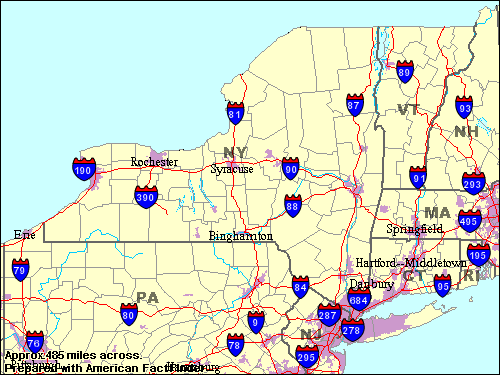|
||
 |
||
|
New York, the "Empire
State"
Abbreviation: NY |
||
|
The Dutch were the first settlers in New York, establishing Fort Orange near Albany in 1624 and New Amsterdam on the island of Manhattan a year later. After the English took over in the 1660s, the colony was renamed New York, after the Duke of York. One of the original 13 states to join the Union (it entered in 1788), New York is known as the "Empire State." The state includes everything from skyscrapers in Manhattan to rivers, mountains, and lakes in upstate New York. Niagara Falls is one of the chief attractions. New York is the leading center of banking, finance and communication in the United States. Much of the state's greatness lies in exciting New York City, the largest city in the United States and the fourth largest city in the world; its many theaters, museums, and musical organizations make it one of the cultural centers of the Western Hemisphere. GOVERNMENT Population (July 2001): 19,084,350; National Rank: 3; Percent change since April 2000: .2% Land Area: 47,224 sq mi. (122,310 sq km); National Rank: 27 10 largest cities (2000): New York, 8,008,278; Buffalo, 292,648; Rochester, 219,773; Yonkers, 196,086; Syracuse, 147,306; Albany, 95,658; New Rochelle, 72,182; Mount Vernon, 68,381; Schenectady, 61,821; Utica, 60,651 ECONOMY |
||
|
DISCLAIMER Any reference obtained from this server to a specific commercial product, process, or service does not constitute or imply an endorsement by the United States Government of the product, process, or service, or its producer or provider. The views and opinions expressed in any referenced document do not necessarily state or reflect those of the United States Government. |
|
U.S. Diplomatic Mission to Germany
/Public Affairs/ Information Resource Centers Updated: June 2003 |

